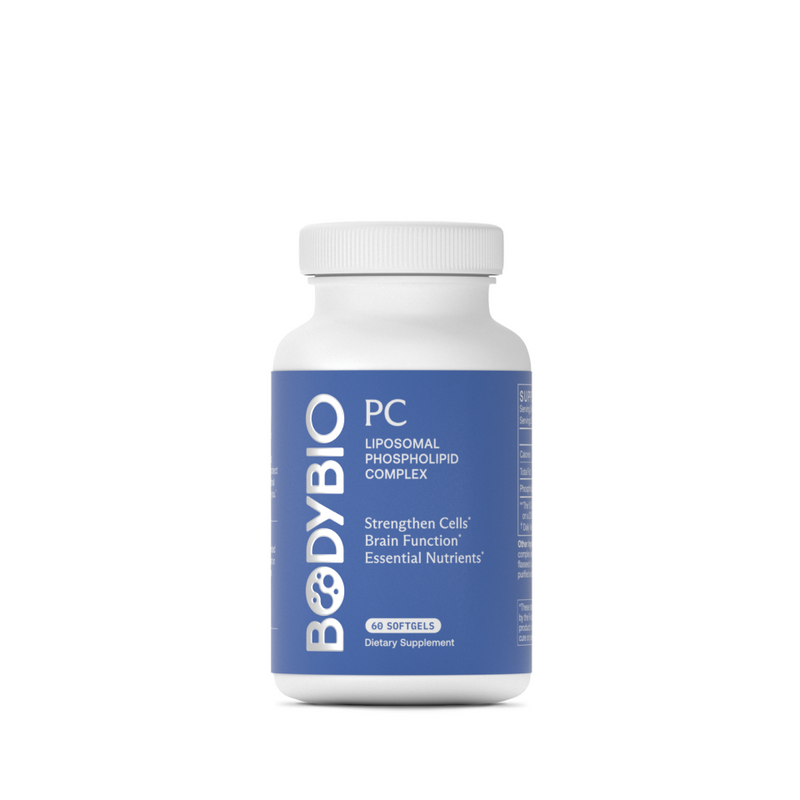Neuroplasticity: How to Rewire Your Brain for Better Physical and Mental Health
Key Takeaways:
What Is Neuroplasticity?
Neuroplasticity refers to the brain’s ability to reorganize information and adapt to different circumstances.
What if there was a way to change your body by rewiring your brain?
As futuristic as this sounds, scientists around the world are making significant breakthroughs in learning about the brain and body connection.
By taking just a few moments every day to focus on your brain health and thought patterns, you can improve your mood, establish positive habits, and even reduce symptoms of chronic illness.
There’s still a lot we have to learn about how to rewire your brain. But there is significant evidence to show that neuroplasticity is the medicine of the future. Even better, it can be totally free.
What Is Neuroplasticity?
Neuroplasticity refers to the brain’s ability to reorganize information and adapt to different circumstances.
Neuro refers to the neurons in your brain that form certain pathways that help you adapt to your surroundings and anticipate future situations. While plasticity speaks to your brain’s ability to change and interrupt those pathways — influenced by both positive and negative experiences.
For example, trauma (with a capital or little “t”) has a big impact on your brain function. Trauma can drastically alter your neurological pathways — triggering your brain to turn on fight or flight, even in an environment where your body is safe.
Similarly, positive reinforcement and joyful meditation can alter the landscape of your brain, creating new neurological pathways that are trauma-free.
What is the Limbic System?
The limbic system plays an essential role in neuroplasticity. It contains the hippocampus, the hypothalamus, and the amygdala — all responsible for memories, emotions, and regulating stress.
Even if a memory isn’t at the forefront of your mind, the limbic system stores it for you and uses it as a guide for future decision-making.
When exposed to physical or environmental trauma, the limbic system may kick into high gear and trigger the fight or flight response in order to protect you. So rewiring certain thought patterns or trigger reactions often involves calming the limbic system and letting your brain know you’re safe.
Neuroplasticity in Real Life
Neuroplasticity is particularly relevant to today’s world, as society and technology are changing at rapid rates. We may have adapted on the outside by learning how to type, browse the internet, and work an office job, but our brains are still very much programmed for survival in a pre-modern world.
For instance, performing a stressful presentation at work isn’t life-threatening. But your brain hasn’t adapted to recognize that yet. Instead, your anxiety kicks fight or flight into full gear and channels all your energy into the presentation.
This would be an incredible benefit if you were hunting food or being chased by a bear. But these coping mechanisms often cause more harm than good in today’s modern world.
High-stress reactions to relatively low-stress situations are common as our brains are still working to adapt to this new way of living.
The good news is, you have all the tools within you to regulate your limbic system, use neuroplasticity to rewire your brain, and reverse unwanted symptoms of distress.
If you’re experiencing any of the following symptoms, it may be time to rewire your brain:
- Brain fog
- Chronic stress
- Anxiety
- Depression
- Chronic unhealthy habits
- Chronic fatigue
- Unexplained symptoms
- Hormone imbalances
- Long COVID
- Chronic inflammation
-
Unexplained food sensitivities
Neuroplasticity Exercises for Better Health
By incorporating just a few neuroplasticity exercises into your lifestyle, you can improve your brain function, reduce inflammation, and reverse mental distress.
It’s normal for brain work to feel overwhelming at first, so start by adding or changing just a few habits. Once you’re comfortable and feeling better, you can add more as time goes on.
Distract Your Brain
One of the best ways to rewire your brain is to distract it. When you find yourself caught in a mental loop of self-sabotage, start singing one of your favorite songs out loud. If you have extra time, you can immerse yourself in a meditative practice or begin working on an art project.
Just make sure you find something that reroutes your thoughts and creates a new neurological pathway that isn’t caused by stress. That means no negative distractions like violent TV or video games, or eating junk food.
Choose Low Impact Exercise
High-intensity exercises have their place, but if you want to rewire your brain, it may be time to take a break from them. Intense workouts can put your body into a state of chronic stress — since your body can’t discern whether you’re running for fun or from a wild animal.
Replace running, HIIT, and CrossFit with calmer exercises. Yoga, pilates, hiking, swimming, or cycling are all great ways to get your workout in without setting off your limbic system.
Decrease Stress Levels
When chronic stress hormones reach your brain, your limbic system will send a signal to your body that all is not well. Unexplained symptoms and high levels of inflammation can come out of nowhere — that’s why it’s essential to honestly evaluate your stress levels.
If things are getting out of hand, choose to set boundaries at your job, at home, and even with the people you love if they are constantly adding to your stress levels. Nothing you’re doing right now is worth sacrificing your health for.
Practice Gratitude
If this feels like an uncomfortable practice — that’s how you know you need it. Writing in a gratitude journal or listing things you’re grateful for throughout the day is a great way to create new neurological pathways and lead your brain into a more peaceful and contented state. (This can be a simple 2-5 minute practice before you go to bed each night or right after waking up.)
Rearrange Your House
You read that correctly: changing the environment around you is an easy way to send new messages to your brain. By rearranging the furniture in your house or redecorating your walls, you’re opening up your neurological pathways to receive something new.
Let your creativity take over by creating a vision board, or posting photos of happy memories and people you love. And a new cheerful paint color can go a long way!
Inner Child Work/Reparenting
If you experienced trauma as a child, it may be beneficial to go all the way back and rewire your brain from the beginning. It’s surprising how much our early childhood memories continue to have a huge impact on our day-to-day life.
Next time you remember a traumatic event from your childhood, take time to meditate. Talk directly to your younger self and offer them the love and attention you craved during that moment. This will create new neurological pathways in your brain and work to heal past trauma.
You can even find free guided meditations that help you rewire these trauma patterns on YouTube.
Press Pause on Crime Documentaries
Who doesn’t love a good crime documentary?
An adrenaline high brought on by crime documentaries or emotionally intense TV shows can put your body into fight or flight. Since your body doesn’t know how to differentiate types of stress, these forms of entertainment can be harmful if your body is already in distress.
If you’re looking to rewire your brain, press pause on crime documentaries just for a while — until your brain heals and you have more awareness around your stress patterns.
Embrace Your Creative Side
Creative practices like painting, writing, reading, and crafting automatically put your body in a relaxed state. If you’re not taking time out of your day to do the things you love, your body is definitely in distress. Choose any creative practice that makes you feel at peace and commit to working on it three times a week.
Get Adequate Sleep
Putting all the effort into retraining your brain when you’re not focused on getting enough sleep is counter-intuitive. Your body needs sleep in order to rejuvenate and reinforce the positive changes you’re making throughout the day. Studies even suggest that sleep helps to detox your body from unwanted toxins.
Neuroplasticity Therapy
For those experiencing extreme limbic system distress, a neuroplasticity therapy program may be something to consider. Programs like DNRS and Gupta take a deep dive into brain retraining and neuroplasticity recovery. They are believed to help heal symptoms of chronic illness caused by POTS, Lyme Disease, Post COVID Syndrome, Chronic Fatigue Syndrome, Fibromyalgia, and environmentally acquired illnesses like mold toxicity.
Hötting, K., & Röder, B. (2013). Beneficial effects of physical exercise on neuroplasticity and cognition. Neuroscience and biobehavioral reviews, 37(9 Pt B), 2243–2257. https://doi.org/10.1016/j.neubiorev.2013.04.005
Phillips C. (2017). Brain-Derived Neurotrophic Factor, Depression, and Physical Activity: Making the Neuroplastic Connection. Neural plasticity, 2017, 7260130. https://doi.org/10.1155/2017/7260130
Fares, J., Bou Diab, Z., Nabha, S., & Fares, Y. (2019). Neurogenesis in the adult hippocampus: history, regulation, and prospective roles. The International journal of neuroscience, 129(6), 598–611. https://doi.org/10.1080/00207454.2018.1545771
Derbyshire E. (2018). Brain Health across the Lifespan: A Systematic Review on the Role of Omega-3 Fatty Acid Supplements. Nutrients, 10(8), 1094. https://doi.org/10.3390/nu10081094
Holly Hazlett-Stevens, Jonathan Singer & Adrienne Chong (2019) Mindfulness-Based Stress Reduction and Mindfulness-Based Cognitive Therapy with Older Adults: A Qualitative Review of Randomized Controlled Outcome Research, Clinical Gerontologist, 42:4, 347-358. https://doi.org/10.1080/07317115.2018.1518282
Ashar, Y. K., Gordon, A., Schubiner, H., Uipi, C., Knight, K., Anderson, Z., Carlisle, J., Polisky, L., Geuter, S., Flood, T. F., Kragel, P. A., Dimidjian, S., Lumley, M. A., & Wager, T. D. (2022). Effect of Pain Reprocessing Therapy vs Placebo and Usual Care for Patients With Chronic Back Pain: A Randomized Clinical Trial. JAMA psychiatry, 79(1), 13–23. https://doi.org/10.1001/jamapsychiatry.2021.2669

